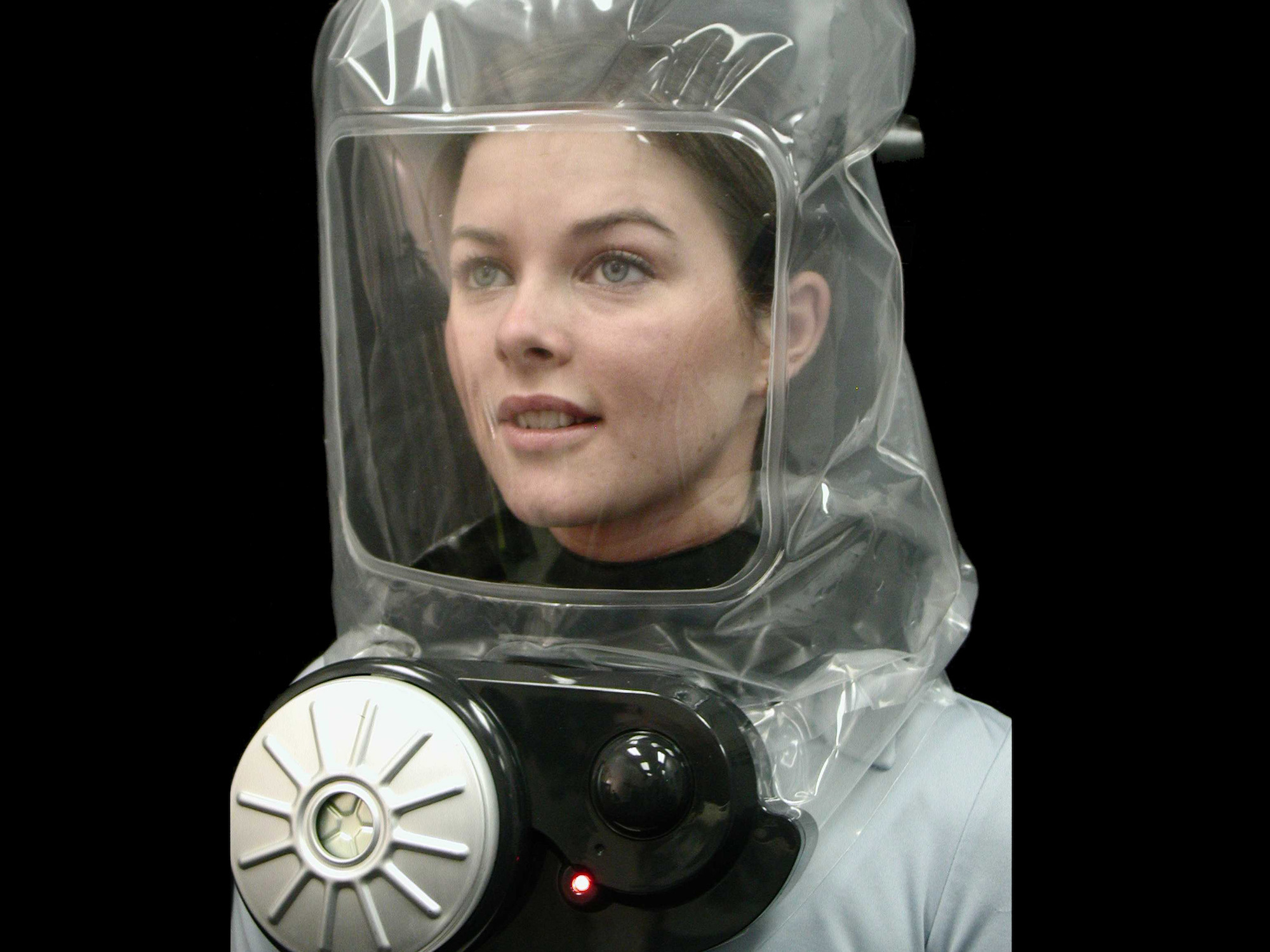

The violent, deadly incursion into the Capitol last week produced a shocking stream of images, and among them was the bizarre sight of some people wearing spacesuit-like transparent pieces of gear over their heads.
For example, David Trone, a Democratic congressman from Maryland, tweeted on January 6, saying, “I am safe. We have been evacuated.” The tweet included three images of the eye-catching pieces of protective equipment. While they’ve been referred to as gas masks, they’re technically known as escape hoods.
Sometimes also called escape respirators, these hoods serve a key purpose: to allow an untrained civilian to quickly and safely get away from an area that may have a chemical, biological, or even radiological or nuclear threat present.
These specific hoods were made by ILC Dover, according to Doug Durney, the product line manager for that company’s PPE gear.
Here’s what they do, and how they work.
“When you open it from its case, it automatically comes on,” Durney explains. A fan system pulls air through filters—both a HEPA filter as well as a carbon one—and then fills the hood with clean air. Air also exits through a valve located elsewhere on the hood. The red LED you may have seen in photos shows that it’s on.
The hood forms a seal around the wearer’s neck, but the system also creates a positive pressure gradient between the inside of the hood and the outside air—meaning that air wants to flow outward from the protective gear, and not into it. That helps prevent contaminants from getting in even if someone’s long hair, for example, gets caught in the area where it seals against the neck. Unlike a true spacesuit, it’s not designed to be tightly sealed off from the environment.
This item is called the Scape CBRN 30, and it comes in two varieties: one that also protects against carbon monoxide (the Scape CO/CBRN) and one that doesn’t. The acronym CBRN is a common term referring to chemical, biological, radiological, and nuclear threats, and “30” in this case references the time period it’s intended to protect the wearer for: 30 minutes.
That relatively short time frame highlights the gear’s purpose—it’s intended to be thrown on quickly as someone leaves a dangerous area. That differentiates it from the type of gear that professional first responders might don when purposely entering a hot zone. More advanced protective suits include their own air supply; these do not.
“It’s designed for a relatively untrained user, where you pop it on your head, and go,” Durney says. “There’s no on-off button.”
“You can be seen, and you can see,” he adds, referring to the fact that it’s a transparent hood-like system, as opposed to a tight-fitting mask that could obscure part of your face. (Individually, these ILC Dover escape hoods cost about $580, which is the price listed on Grainger.com.)
Escape hoods like this from the company are designed to protect against nasty agents like mustard or sarin gas, ammonia, chlorine, or anthrax. They’re also effective at keeping radioactive particulates out of your lungs—dust that may be radioactive, for example—but they wouldn’t guard against the effects of ionizing radiation itself.
In this case, the escape hoods were reportedly used because of tear gas in the area, according to The New York Times and other reports.
The caching of escape hoods is a decidedly 21st-century phenomenon in the Capitol. “It was a post-9/11 type of purchase,” Durney says.
The Los Angeles Times reported in 2002 that some 20,000 hoods were sent to the Capitol in June of that year, and that they were made by a company called Survivair at that time. The context, beyond the air-based terrorist attacks in New York and Washington, D.C., was the anthrax attacks that involved two U.S. Senators’ office. Five people died as a result of that biological agent.
